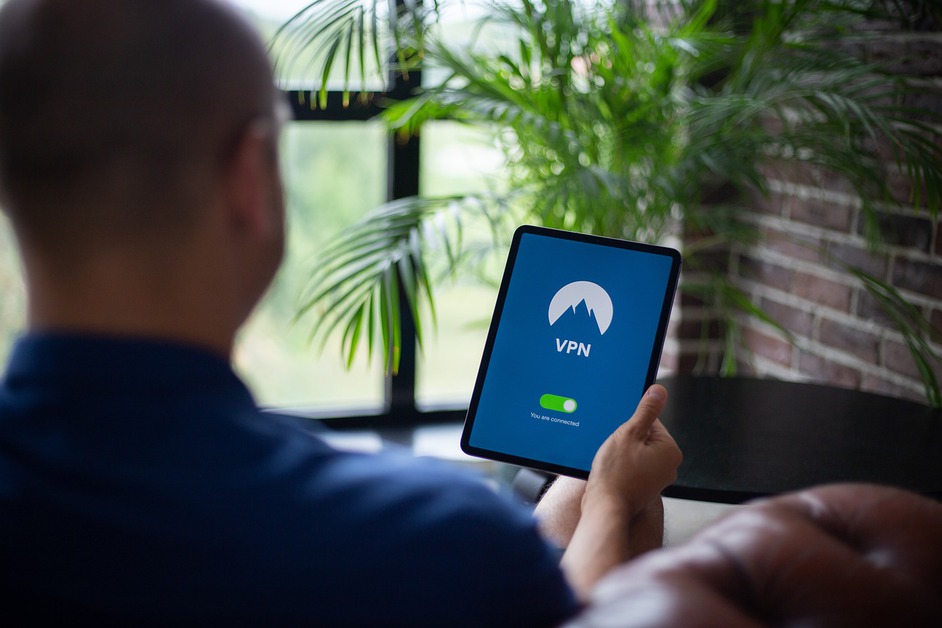Does VPN hide your MAC address: what you need to know?
It can websites track it down or can it be seen on your router? To answer these questions, you must first understand what a MAC address is and how it is used by computers. Let’s take a closer look at what you need to know.
What is the MAC address?
Media Access Control (MAC) is a 12-character address that is unique to each computer (for example, E8:FC:AF:B9:BE: A2). It is used to define a physical device (or hardware) on a local network, such as a network interface card (or NIC). Since it was burned in by a producer, this address would never change.
In certain instances, there are many devices connected to the same network – computers, tablets, or televisions – and a router keeps track of each device’s MAC addresses to know which internet packets belong to which device. This information is stored in an ARP table, which assigns a local IP address to each MAC address.
Take a look at the following graph to see how MAC addresses are used to communicate between devices:
When you want to reach a specific website, your laptop and a router connect over a local network using their MAC addresses. The router then strips your device’s MAC address and replaces it with its own when sending internet traffic beyond the local network. Before sending any internet packets further, each hop removes and replaces the previous device’s MAC address. Routers and other network equipment just know the MAC addresses of devices that are directly connected to them in a long network chain.
Can websites see your MAC address?
If you use a VPN or not, websites are unable to see your device’s MAC address because it is removed once your internet traffic leaves the router. Since it normally takes several hops through different devices to access your router, the website can’t even know its MAC address.
MAC can’t be used explicitly by websites, but there are a couple of indirect ways to get it: extracting it from your IPv6 and running a script on your laptop.
MAC address exposed to the websites via IPv6
IPv4 and IPv6 are two types of IP addresses that you’ve already heard of. Many ISPs now allocate your account to both versions. The interesting part is that the IPv6 format is very similar to the MAC address format, which is why IPv6 addresses are often created using it.
When you visit a website, both your IPv4 and IPv6 addresses are available to the website, and your MAC address can be extracted from your IPv6 address. Using a VPN to fully hide both versions of your IP address, preventing indirect access to your data, is a good idea. Not all IPv6 addresses use your device’s MAC address; your ISP may have assigned you several different ones at random.
Scripts can get your MAC address
Another way for websites to get your MAC address is to run a script on your computer directly. It is technically feasible, but practically impossible to execute, since running a script that can access the system’s details will entail duping you into granting administrator privileges and then running it on your device.
Since such a script could not possibly be run from a browser, simply visiting a website and clicking a random popup would not work. As a result, the only way it will function is if someone connects to your machine remotely and runs the script file you downloaded.
Does a VPN hide your MAC address from a router?
A router is part of a local network, and your computer communicates with it using its MAC address. Since VPNs are used to mask your IP address on the public internet, they can not hide your MAC address from a router. Indeed, if your MAC address is shielded from a router, you would be unable to access the internet.
How can you spoof your MAC?
On a local network, hiding your MAC address completely isn’t possible because it would cut off your internet access; however, if you’re worried about anyone detecting your computer, you can spoof it.
There is a way to fake or alter your real MAC address, or even build a temporary one that rotates all the time, on every operating system. Here’s how to imitate your MAC through all platforms:
How to spoof your MAC address on Windows 10?
Here’s how to spoof your MAC address on Windows 10:
- Type Device Manager in Windows 10 search box
- Find Network Adapters and select Properties of your network adapter
- Go to the Advanced tab and select Network Address or Local Network Address
- Change the value in the box and restart your device
How to spoof your MAC address on macOS?
Here’s how to spoof your MAC address on macOS:
- Turn off wifi
- Launch Terminal app
- Use terminal command to generate random MAC address: openssl rand -hex 6 | sed ‘s/\(..\)/\1:/g; s/.$//’
- Use terminal command to set the new MAC address sudo ifconfig en0 ether xx:xx:xx:xx:xx: xx where your new MAC is instead of X’s
- Restart your device
How to spoof your MAC address on macOS?
Here’s how to spoof your MAC address on macOS:
- Turn off wifi
- Launch Terminal app
- Use terminal command to generate random MAC address: openssl rand -hex 6 | sed ‘s/\(..\)/\1:/g; s/.$//’
- Use terminal command to set the new MAC address sudo ifconfig en0 ether xx:xx:xx:xx:xx: xx where your new MAC is instead of X’s
- Restart your device
How to spoof your MAC address on iOS?
Spoofing your MAC address on iOS requires jailbreaking your phone, therefore it is not recommended to spoof it.
How to spoof your MAC address on Android?
Here’s how to spoof your MAC address on Android:
- Go to GooglePlay and download ‘Android Terminal Emulator‘ app
- In the app type ‘IP link show’ to get the network interface name (it’s probably ‘wlan0’)
- Now type ‘IP link set wlan0 XX:XX:XX:YY:YY: YY’ where wlan0 is your network interface name and new MAC address value instead of Xs and Ys.
- Go to device properties to see if your MAC address has been changed.
Conclusion
When you use a VPN, it doesn’t really influence or mask your computer’s MAC address, but it doesn’t need to because your MAC address doesn’t go any farther than your router in the long device chain. However, there are a couple of less straightforward ways to discover your MAC address: one is by extracting it from your IPv6 address, and another is by tricking you into running a script that sends the data. You may use a VPN to mask your IPv6 address or try to spoof your MAC address if you really want to shield yourself.










Leave a Reply